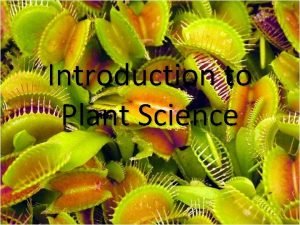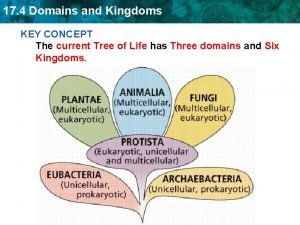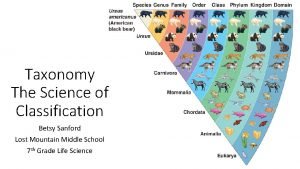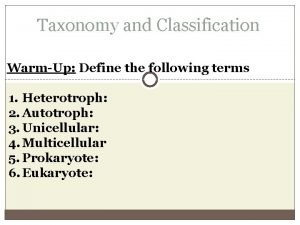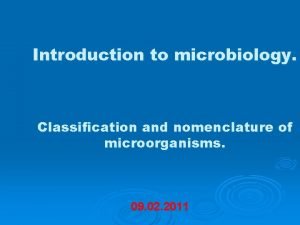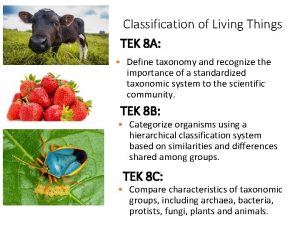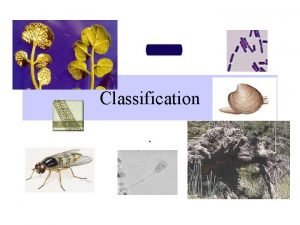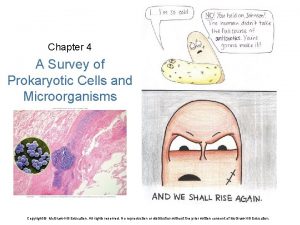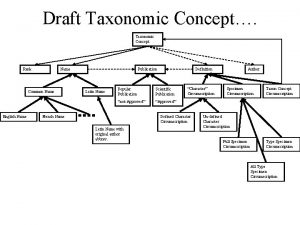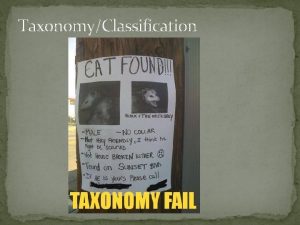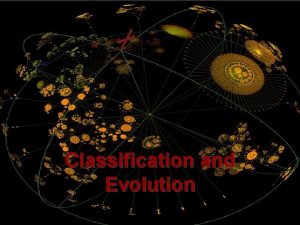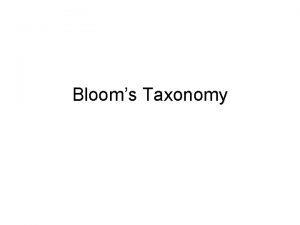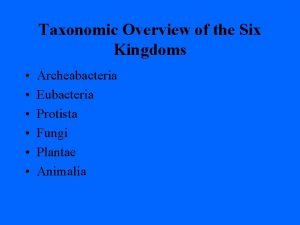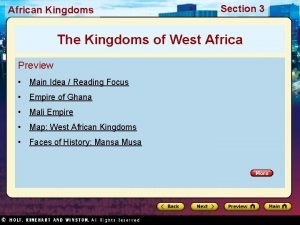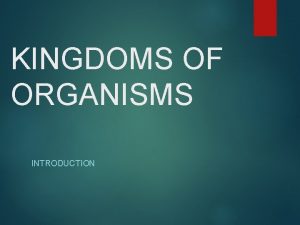The 6 Kingdoms TaxonomyClassification Unit Taxonomic Key a














- Slides: 14

The 6 Kingdoms Taxonomy/Classification Unit

Taxonomic Key – a series of paired statements that describe the physical characteristics of different organisms (Also known as: Dichotomous key) Example: Page 37 in textbooks

Organisms are placed into kingdoms based on their type of cells, their ability to make food, and the number of cells in their body Autotroph – organisms that can make it’s own food Heterotroph – can’t make it’s own food Prokaryote – organisms that do NOT have a nucleus Eukaryote – they DO have a nucleus (unicellular and multicellular)

Autotroph Heterotroph Prokaryote Eukaryote

Making the connection… 7 Levels of Classification 1) Kingdom 2) Phylum 3) Class 4) Order 5) Family 6) Genus 7) Species (SIX Kingdoms)

Six Kingdoms (Books: page 40) 1. Archaebacteria 2. Eubacteria 3. Protists 4. Fungi 5. Plants 6. Animals

Six Kingdoms 1. Archaebacteria – unicellular prokaryote – found in places without oxygen – on ocean floor, in salty water, hot springs & your intestine – heterotrophs & autotrophs 2. Eubacteria – unicellular prokaryote – heterotrophs & autotrophs (different chemical makeup than archaebacteria)

Archaebacteria Ø Extreme conditions!!!!! Eubacteria

Checkpoint! What are the similarities between archaebacteria and eubacteria? What is the difference between them?

3. Protists – most are unicellular (seaweed is multicellular) & are eukaryotes – heterotrophs & autotrophs – “Odds and ends” kingdom 4. Fungi – multicellular eukaryotes (except yeast) – heterotrophs – mushrooms, molds, mildews

Protists Fungi

5. Plants – multicellular eukaryotes – autotrophs – feed almost all the heterotrophs on Earth 6. Animals – multicellular eukaryotes heterotrophs

Sequoia tree and Bristlecone pine

6 Kingdoms Autotrophs Heterotrophs & Autotrophs Heterotrophs & Autotrophs
 6 kindoms
6 kindoms Phylogenetic relationship definition
Phylogenetic relationship definition Horticulture branches
Horticulture branches Taxonomic keys
Taxonomic keys Dichotomous key for 6 kingdoms
Dichotomous key for 6 kingdoms Chapter 17 domains and kingdoms
Chapter 17 domains and kingdoms Concept mapping chapter 17 domains and kingdoms answer key
Concept mapping chapter 17 domains and kingdoms answer key Classification study guide answer key
Classification study guide answer key At what taxonomic level do the ferret and muskrat diverge
At what taxonomic level do the ferret and muskrat diverge Importance of micro organisms
Importance of micro organisms The 8 taxonomic groups
The 8 taxonomic groups Sunflower classification
Sunflower classification Taxonomic classification of tiger
Taxonomic classification of tiger Linnaean classification system
Linnaean classification system Major taxonomic groups
Major taxonomic groups


